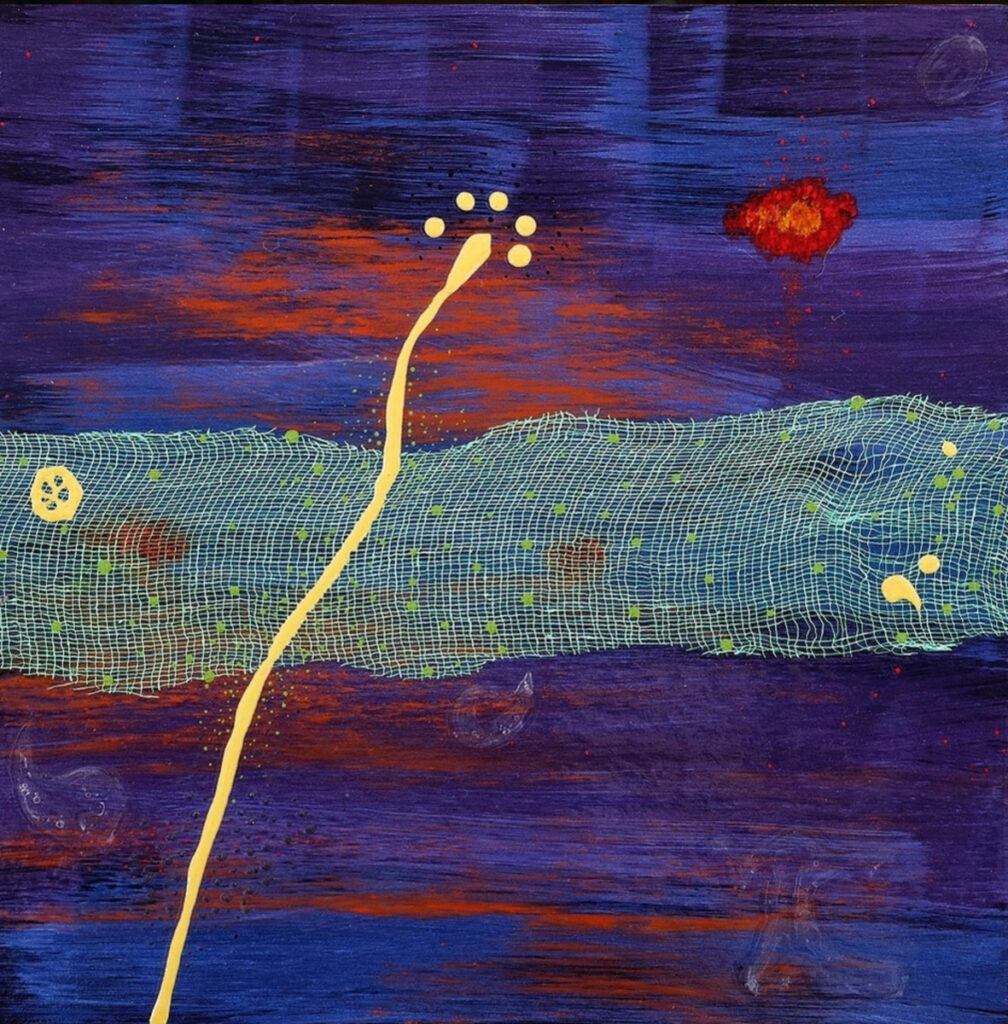Edward Bock recalls spending hours knee-deep in the swamps and creeks near his boyhood home in St. Louis, Missouri, covered in duckweed, and collecting specimens for study. Now at 75, the former photographer-turned-painter is in many ways trying to recapture that spirit of discovery and connection with nature in his multi-layered abstract canvases.
“My focus in the last 15 years has been on fine arts, and it took a long time to get here,” he said.
Bock considered a career in biology before pursuing filmmaking and photography professionally. He served in the U.S. Army as a motion picture photographer for informational documentaries and went on to work for a private communications firm before launching his own multimedia and commercial photography business. In his spare time, he created original art by melding photographic images of patterns, textures, and various subjects, experimenting with color palettes, exposure times, and image layering. Creating art was a hobby, but he had difficulty believing in his abilities, he said, and never dared call himself an artist.
Cut to several decades later when he built a studio at his current home near Minneapolis in 2006, and he began to question what he really wanted to do. He decided to pursue fine arts full-time a few years later.
“In my career, I made a good living and got to explore my creative interests but it was always in the service of somebody else’s ideas and needs,” Bock said. “I wanted to find out what kind of artist I was.”
Today, the entrance to Bock’s studio features his mantra, which reads in part: My deep inner artist has been gathering everything I need, my whole life. All is available to me and for me now.
He describes his process as totally immersive, with no preconceived notions of what will result. He sometimes becomes so absorbed in his work he forgets to turn on the music he intended to play as a soundtrack. Daily excursions past his still fish pond fuel his desire to create. His “endlessly patient” wife, also his walking companion, waits as he snaps pictures on his iPhone of moments that inspire future canvases. As he paints, childhood memories of fascination with nature float by, like catching a fish and releasing it back in the pond.
His photographic training and predilection for scientific inquiry also play a role, as in the 2018 series
Darkfield Biome.
The dynamic body of work is inspired by photographs he took through a microscope of organisms living in his aquariums and envisions overlapping movements of tiny animals, plants, pollens, seeds, algae, microbes, insects, and blooms.

Darkfield Biome is an imaginary world of macro and micro overlapping views of my garden and pond at night: the tiny animals, plants, pollens, seeds, algae, microbes, insects, and blooms.
Another series, Language of Clams, draws from a visit to a friend who operated a marine sciences research facility in New Guinea. Bock became fascinated with his friend’s shell collection, including the distinct markings of a species of saltwater clam called Lioconcha hieroglyphics.

Language of Clams
He wondered: What would the language of clams look like? Would they use pheromones seeping through the water, sound vibrations, colors, or inks released like an octopus? If they had an alphabet, would you read it right to left or from any direction as the letters floated away? The resulting abstract symbols and shapes continue to inspire
his works.
From that voyage, Bocks says he saw the life he could have had with a career in the sciences. It would have been a good life, he thought. Yet he regrets none of his choices. “From the viewpoint of an older person looking back, there are a lot of lives I could’ve lived,” he said. “I don’t bemoan anything. Instead, I relish that I still have the opportunity to explore my interests.”
What life lessons have you learned over you career as an artist? Comment with your thoughts to let us know.